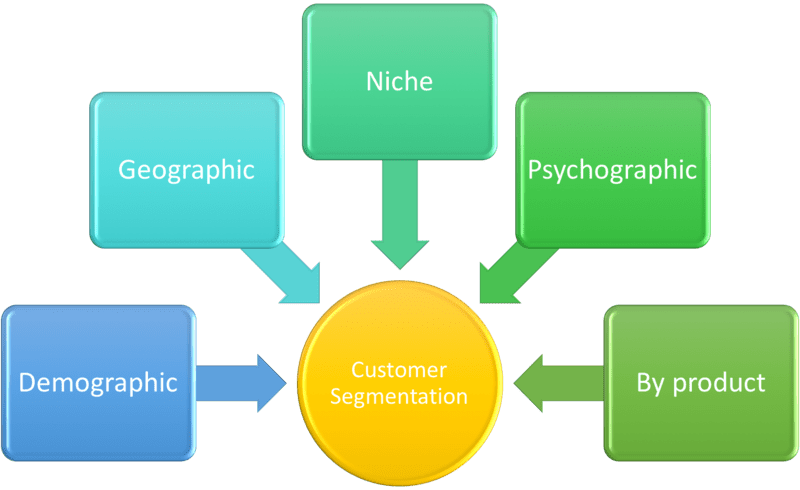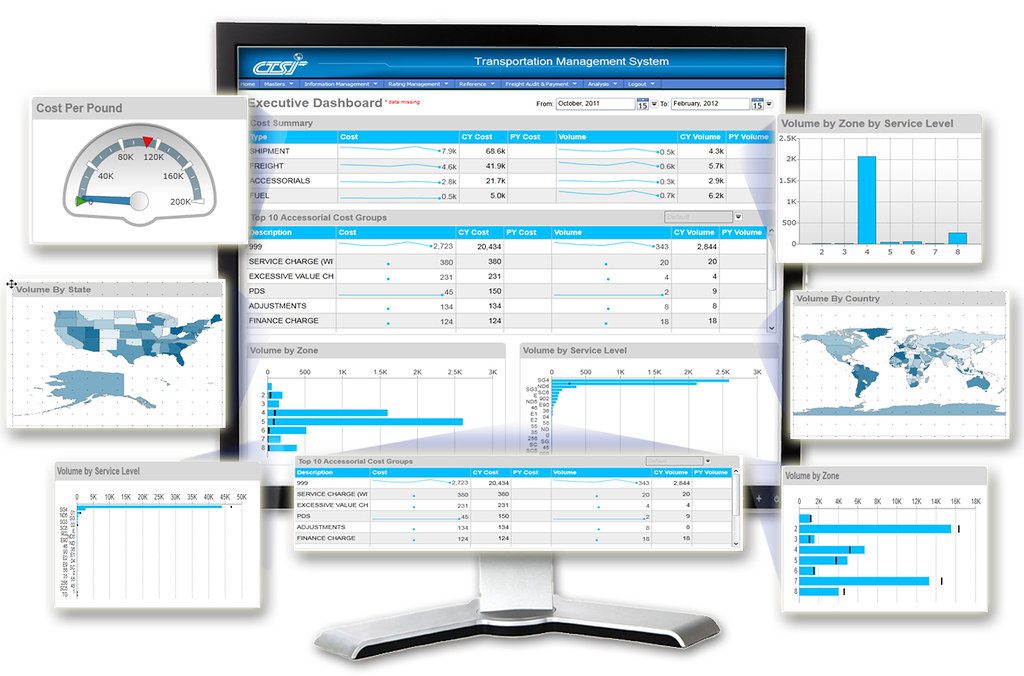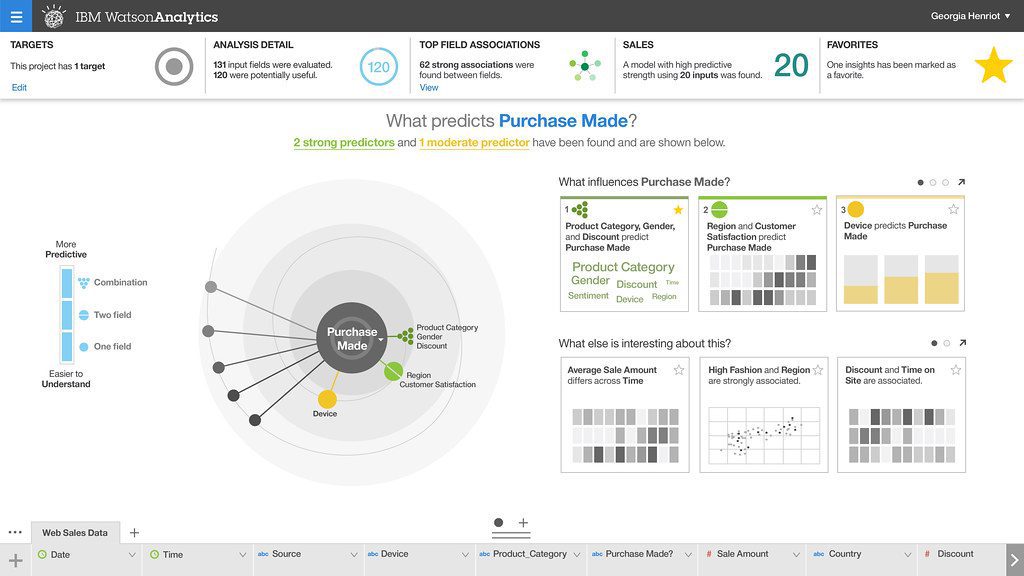Advanced analytics, data science, business intelligence, data analytics, machine learning, data mining, predictive analytics…these are terms that are tossed about in the world of big data and analytics, and often used interchangeably. It’s understandable. All of these practices are related, but, they are not the same thing.
When we speak to companies about building advanced analytics teams and capabilities, we find that people often have differing ideas of what advanced analytics means. Some are thinking in terms of automating manual business analytics practices, others are putting in place machine learning initiatives.
In this article, we’ll try to define advanced analytics and related terms and provide some insights into their application and benefits.
A Very Brief History of Analytics
Historically speaking, “analytics” dates back to the times when Henry Ford tracked the speed of his assembly lines. With the advent of computers, modern analytics has really has evolved into what we now call “data analytics”. Data analytics further evolved in the age of big data and the cloud. According to Dataversity data analytics can be defined as “the research, discovery, and interpretation of patterns within data.” Advanced analytics techniques fall under this very broad data analytics umbrella.
What is Advanced Analytics?
Advanced analytics is really an umbrella term for a wide variety of analytics techniques and tools that work together mostly in a predictive way. Most commonly, the term refers to data mining, machine learning, prescriptive analytics, big data analytics, predictive analytics, forecasting and generally, finding patterns in data. Some professionals include more advanced techniques such as AI, neural networks, and related techniques such as data visualization under this umbrella.

Generally speaking, advanced analytics categorizes the kind of analytics techniques that go beyond common business intelligence solutions. The kinds of tasks that can be executed using advanced analytics include:
- Segmentation – grouping items based on similarities
- Classification – of unclassified elements according to shared qualities
- Correlation – identifying relationships between element properties
- Forecasting – derivation of future values
- Association – identification of the frequency of joint occurrences and the derivation of rules such as “C usually follows A and B”.
Advanced Analytics vs. Business Intelligence
Business intelligence (BI) and advanced analytics address similar business issues, but there are some differences between these two practices.
What is Business Intelligence?

Business intelligence is also sometimes called “descriptive analytics”. BI typically focuses on historical business data, almost always structured data, often from one or just a few sources. It is typically concerned with measuring past performance.
Historically, BI was used mainly for reporting purposes. Thus, the goal of BI is to provide a summary view of facts and figures in an understandable format. A common example of BI reports would be a historic review of an organization’s sales or financials. The outputs of BI can be used to inform or prepare data for further advanced analysis.
Business intelligence tools, such as querying, reporting and dashboards, are used to identify new opportunities and trends that can help businesses to develop competitive strategies. For example, companies might use past data to better manage inventory by ordering the correct amount of it at any point in time.
How Advanced Analytics Differs from BI
Advanced analytics focuses more on forecasting, using both unstructured and structured datasets that are often disparate. Advanced analytics aims to identify trends that help determine what is likely to happen in the future. Advanced analytics methods typically address more complex issues compared to BI and involve more complicated quantitative methods.
Borrowing from the previous example of inventory management, advanced analytics allows a company to better manage not just inventory, but the entire supply chain, by exploring and analyzing the large volumes of end to end data produced along the chain.
Advanced analytics is also very helpful in producing “what-if” analyses, where companies can take flexible variables and incorporate hypothetical circumstances or data to forecast outcomes.
Finally, the process and approaches used for solving business problems are different between BI and advanced analytics. Business intelligence analysis is designed to be more repetitive, making use of reporting templates that extract specific information and data. The information that is analyzed and its presentation format are usually pre-defined.
The advanced analytics process first comes up with a business question. Then a set of analyses is performed using statistical and quantitive data along with algorithms to provide insights on the question and generate recommendations.
Advanced analytics techniques serve two essential purposes – optimization and innovation. These methods can be used to improve existing processes, for example sales planning, and can also generate new insights that can reveal potential new business products or models.
What are the Different Types of Advanced Analytics?
The term advanced analytics pretty much covers any analytical techniques that go beyond the scope of business intelligence and which have forecasting and predictive goals. Several of the more common advanced analytics techniques are described below. The list is not comprehensive, however.
Predictive analytics

Predictive analytics is probably the most well-known type of advanced analytics. This type of analytics, as its name implies, attempts to answer the question “What will likely happen in the future?” Predictive analytics goes beyond telling businesses what happened in the past and why, by using historical data and probabilities to predict future outcomes.
Predictive analytics uses statistical techniques derived from data mining, machine learning and predictive modeling. Predictive models enable businesses to move beyond reacting to what has happened and try to use future prediction to meet business goals and manage business risks.
An increasingly common use of predictive analytics to forecast required maintenance on manufacturing equipment. Other uses for predictive analytics include forecasting demand curves or customer value, and identifying high-risk hospital patients.
Prescriptive analytics
Prescriptive analytics combines elements from both BI and predictive analytics. This technique seeks to find the best course of action, based on past records, for the future. Prescriptive analytics is used when businesses want to know which solution is best suited for a given business problem.
Data mining
Data mining is the process that uses computer science and statistics to identify relationships, sequences, and anomalies in large raw data sets. Data mining also involves database and data management aspects and data pre-processing. The overall goal of data mining is to extract information from a data set and transform it into a structure that can be further used.
Machine learning
Machine learning uses computational methods to find patterns and inferences in data and automatically create statistical models to produce reliable results with minimal human intervention.
What distinguishes machine learning is the massive amount of data it encompasses including numbers, words, images, clicks – anything that can be stored digitally. Machine learning algorithms are largely responsible for artificial intelligence applications.
Data science
Data Science is the study of various types of data such as structured, semi-structured, and unstructured data in any form or formats available in order to get some information out of it. When advanced analytics starts engaging in advanced technologies such as deep learning, machine learning and artificial intelligence it is called “data science”. Data science is focused on studying various forms of existing data to extract useful information and insights.
Data science involves the use of highly advanced data cleansing tools, smart algorithms, advanced visualization techniques, and self-driven systems. Unlike predictive analytics, which typically uses structured datasets that are sometimes taken from templated BI data outputs, data science tools deal with very messy and very large data sets. In this sense, predictive analytics can be considered a sub-set of data science.
Data Science consists of different technologies used to study data such as data mining, data storing, data processing, data purging, data transformation, etc., in order to make it efficient and ordered. Data science is also heavily computer science and programming focused.
Cohort analysis
Cohort analysis is a technique that examines the behavior of a group of people to draw broadly applicable insights. Cohort analysis is a subset of behavioral analytics. It takes a selection of data from a larger data set over a period of time, and instead of looking at all the users as one single unit, it segregates them into smaller related groups based on different types of attributes for analysis.
An example of cohort analysis use would be to test a hypothesis that customers acquired via Google ads have higher customer lifetime value than those acquired through Facebook ads.
Cluster analysis
Cluster analysis is a way to identify similarities and differences in different sets of data and present that data visually in a way that makes comparisons easy. The analysis groups a set of objects that are more similar to each other than to objects in other groups. It is one of the main tasks of exploratory data mining.
Box plot visualizations are a standard way of showing the distributions of data in a cluster.
Technologies and Tools for Advanced Analytics
Recent years have seen an explosion in automated tools for conducting advanced analytics. One type of advanced analytics software includes use-case specific solutions that hide algorithms and task-specific modules behind a user-friendly interface. These solutions are typically best suited for limited analysis, for example, a business unit that wants to do frequent price optimizations may use such a tool.
Some BI tools with extended advanced analytics functions allow users to perform simple mathematical calculations such as exponential smoothing.
When the use cases and requisite models and variables become more complicated, however, an advanced analytics platform, such as Alteryx is warranted. These platforms allow business users to conduct modeling tasks and implement more advanced tasks such as decision trees and text mining.
The Future of Advanced Analytics
Advanced analytics tools and techniques will no doubt continue to evolve as it has in the past. Gartner recently published its predictions for the future of analytics. Key trends cited were:
- Augmented analytics
Augmented analytics uses machine learning to enable citizen data scientists to deploy models and conduct advanced analysis.
- Digital culture
According to Gartner, digital culture includes data literacy, data ethics, privacy, and data for good initiatives. Digital culture means that organizations need to upskill the workforce to be able to use analytical insights and to avoid common pitfalls.
- Relationship analytics
Relationship analytics refers to combining data sets of graph, location, and social information and making connections between them, as opposed to analyzing these types of data in isolation.
- Decision intelligence
Decision intelligence recognizes that decisions often span multiple applications and groups in an organization. It provides a framework to design, model, align, execute, monitor, and tune decision models across the organization.
- Operationalizing and scaling
This trend is about organizations trying to organize their data and make it accessible and useful to those who need to analyze it. It also involves systematically identifying those who can benefit from analysis insights and contextualizing information and outputs for different roles.